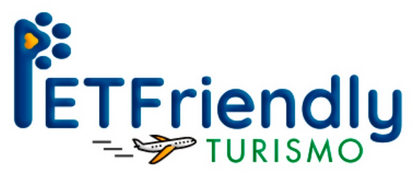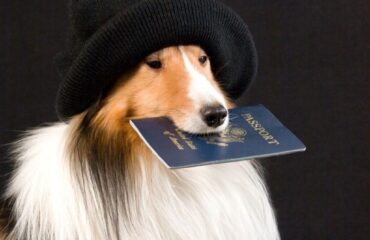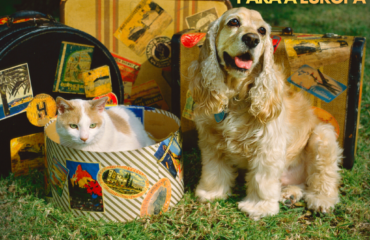
Traveling with animals to Morocco is a complex matter, as it requires close attention to the timing of the health stages of the trip.
In addition to all documentation, you face the difficulty of language and culture/customs completely different from the West.
Therefore, it is recommended to do a good research about the destination and the local culture, so that you and your pet have an amazing experience.
So for you to be able to make your trip without any headache, you must pay attention to several questions.
If you want to know more about this subject, continue reading this article that the PETFriendly Turismo team has prepared for you.
What are the first steps to travel with animals to Morocco?
Morocco has some requirements and deadlines when it comes to receiving pets from other countries, such as:
- Proof of identification of the animal (Microchip)
- Up-to-date vaccination record (Rabies Vaccination and “V10”)
- Veterinary Health Certificate
- International Veterinary Certificate – MAPA – VIGIAGRO – Brazil.
As well, the rabies and V10 vaccination must be applied at least 30 days before the trip, if applied with the wrong deadline, the PET will not be able to enter Moroccan territory.
Unlike other countries, the CVI for Morocco is valid for only 3 days, where other locations are valid for 10 days.
So, the deadline is a very important requirement and if it is not followed correctly, the animal will not be able to make the trip.
Microchipping pets for traveling to Morocco
Like many countries, traveling with animals to Morocco also requires your pet to have an identification microchip.
This procedure must be performed by an authorized veterinarian and is considered relatively straightforward.
A small chip (the size of a grain of rice) is inserted under the pet’s skin, where it works as a “CPF” for the animal, containing the main information about him and his guardian.
The chosen microchip brand must meet the requirements of ISO 11784 and 11785 to be recognized worldwide and accepted by any official veterinarian abroad.
Vaccinations needed to travel with animals to Morocco
In order for the PET to be able to enter Morocco, it must have its rabies vaccination up to date.
Not all vaccines are accepted, for example, those from vaccination campaigns offered by City Halls or vaccines from national brands are not recognised.
Therefore, you should look for a veterinarian who will supply the vaccines imported according to the rules of the Continent.
Take care of the ideal deadline for the application of this vaccine, so that it is not expired when the animal is boarding.
The “V10” vaccine is one of the most important vaccines for dogs today and is also required for travel with animals to Morocco.
It protects against the main diseases and should be applied from the 45th day of the animal’s life, with 3 to 4 doses in a row, with an interval of 21 to 30 days. After this initial procedure, it must be applied once a year.
This vaccine protects against 7 diseases: Distemper, Parvovirus, Coronavirus, Adenovirus, Parainfluenza, Infectious Canine Hepatitis and 4 types of Leptospirosis.
Veterinary Health Certificate for traveling with animals to Morocco
This is a document in which the veterinarian certifies that the animal is in perfect health and vaccinations are up to date, making it fit to board a flight.
We recommend that you have a trusted professional, so this clinical evaluation will be valid and you will
you will be free of unwanted “surprises”.
International Veterinary Certificate
Also called “CZI” (International Zoosanitary Certificate) is the document that guarantees the transit of animals within the sanitary rules required internationally.
This document is issued by “MAPA” (Ministry of Agriculture, Livestock and Supply) and is valid for only 3 days after its issuance, unlike other countries where the deadline is 10 days.
So, you must pay close attention to the dates, so that you don’t have to carry out a new issue, generating extra costs or even having your animal denied boarding.
Airlines and Ways of boarding your PET to Morocco

Morocco has a completely different culture than what we are used to, and therefore pets are not accepted as Emotional Assistants.
Not all airlines transport pets to this destination, but some do and have reliable services such as:
1) Emirates
3) TAP
Each one has its own rules, requirements and values and therefore the tutor must plan and research the needs of his PET to choose the best option.
Below the three ways to travel by plane to Morocco:
Animals in the Cabin
Some airlines allow the transport of animals in the aircraft cabin, as long as they are small and at least four months old or are guide dogs.
Dogs and cats must travel inside a clean, safe kennel under the seat in front of them.
For this reason, you should consult all airlines and check the specific rules for each one.
Excess baggage
When the total weight of the dog or cat plus the kennel exceeds that allowed by the airline, they must travel in the hold of the aircraft their owner is on.
Usually, airlines transport animals weighing up to 45kg and require the box to be up to 115 cm high and 300 cm linear (sum of height, width and length);
In addition, they must be made of plastic, metal or wood and the grille must be made of metal, as specified by the International Air Transport Association (IATA).
Always check airline rules or PETFriendly Turismo.
Live Charge
Some airlines and some specific routes do not allow animals traveling in the cabin or hold of the aircraft, therefore, they require that they be checked in as Live Cargo.
Each airline has its own rules, so it is necessary to get all the information so that there is no problem at the time of boarding.
Arrival in Morocco with pets
Upon arriving at the Moroccan border, the animal will be evaluated by an official veterinarian to allow entry into the country.
The owner must pay a fee of 10 Dirhams per animal and this will get the necessary permission. This value can be changed by the Moroccan government at any time.
Entrance to Morocco via “FERRY” (Ferry)

Due to the great proximity between the extreme south of Spain and the northwest of the African continent in Morocco, it is possible to cross continents via a ferry.
There are some options for this mode of transport and the frequency and duration of crossings on some routes may vary.
Therefore, it is advisable to do a real-time search for crossings from Spain to Morocco to get the most up-to-date information and check if they accept pets.
Difficulties of traveling with animals to Morocco
Arabs are more fond of felines than canines. This is due to some anti-dog stories and quotes from Muhammad.
In this way, dogs are seen only as protection or hunting animals, not pets.
This does not make dogs prohibited in the country and you will be able to find Pet Shops and places to sell food and supplies for your puppy, more easily in the main Moroccan cities.
With this, the demand for pedigree animals for sale in the territory increased and in the reports of some customers, the issue of the theft of purebred animals was informed.
Therefore, maximum attention must be given to outdoor walks so that no setback occurs with the PET.
How to make traveling easier?
After knowing all the steps, procedures and difficulties to travel with animals to Morocco, the difficulty of the process is verified.
And every country has similar or totally different requirements, which is why Dr. Juliana Stephani, veterinarian and founder of PETFriendly Turismo, specializes in PET travel.
To provide you with the most reliable and secure way to make your move, no matter which continent you need to move to.
Contact our team of experts and let us help you with every step of your journey.
PETFriendly Turismo, THE ONLY OPTION IS TO WORK!







You must be logged in to post a comment.